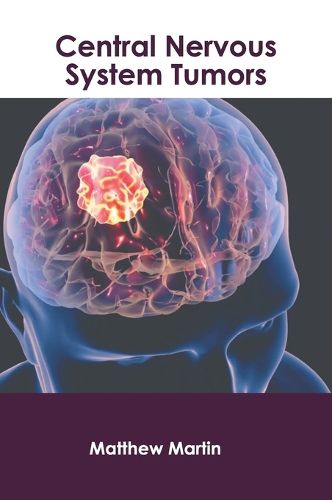Readings Newsletter
Become a Readings Member to make your shopping experience even easier.
Sign in or sign up for free!
You’re not far away from qualifying for FREE standard shipping within Australia
You’ve qualified for FREE standard shipping within Australia
The cart is loading…






The central nervous system (CNS) is made up of the spinal cord and brain. The cranium protects the brain, which is contained in the skull. The brain and spinal cord are connected, and the spinal cord is located caudally to the brain. The vertebrae protect the spinal cord. Grey and white matter constitutes the CNS. Axons and oligodendrocytes make up the white matter, whereas neurons and unmyelinated fibers make up the grey matter. A CNS tumor is an abnormal growth of cells from the brain or spinal cord tissues. Vomiting, headaches, visual abnormalities, nausea, and convulsions are all common symptoms of CNS tumors. Risk factors that may lead to CNS tumors include radiation exposure, genetic disorder, immunodeficiency, and a history of previous cancers. A CNS tumor can be diagnosed using neurological examination of body reflexes, muscle strength, vision and eye movements, X-ray imaging, magnetic resonance imaging (MRI), computed tomography (CT), or biopsy. This book contains some path-breaking studies on central nervous tumors. It will serve as a reference to a broad spectrum of readers.
$9.00 standard shipping within Australia
FREE standard shipping within Australia for orders over $100.00
Express & International shipping calculated at checkout
The central nervous system (CNS) is made up of the spinal cord and brain. The cranium protects the brain, which is contained in the skull. The brain and spinal cord are connected, and the spinal cord is located caudally to the brain. The vertebrae protect the spinal cord. Grey and white matter constitutes the CNS. Axons and oligodendrocytes make up the white matter, whereas neurons and unmyelinated fibers make up the grey matter. A CNS tumor is an abnormal growth of cells from the brain or spinal cord tissues. Vomiting, headaches, visual abnormalities, nausea, and convulsions are all common symptoms of CNS tumors. Risk factors that may lead to CNS tumors include radiation exposure, genetic disorder, immunodeficiency, and a history of previous cancers. A CNS tumor can be diagnosed using neurological examination of body reflexes, muscle strength, vision and eye movements, X-ray imaging, magnetic resonance imaging (MRI), computed tomography (CT), or biopsy. This book contains some path-breaking studies on central nervous tumors. It will serve as a reference to a broad spectrum of readers.